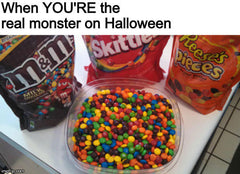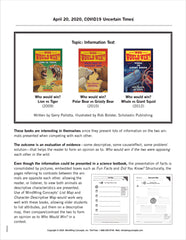Menu
-
- Home
-
About Us
-
The Approach
-
Linking Language & Literacy
-
MindWing Learning
-
Learning Resources
-
SHOP
-
Blog
-
- About MindWing
- Our People
- Contact Us
- Your Account
- Login
-
Spain (EUR €)


Tech Tuesday: AI writes stories!
March 19, 2023
 Artificial Intelligence (AI) has entered a new phase with the recent arrival of generative AI, which can be used to create content rather than just sort existing data. This has resulted in the release of tools such as ChatGPT, which is simple to use and query for all kinds of language content. Just log in with your Google account and you are good to go! Of course, with ChatGPT able to generate any kind of information and write in a wide variety of styles, there are concerns about its use as a workaround for schoolwork. Teachers do have tools to detect AI writing, and a specific SLP’s take is that this kind of AI clears the way for us to work on higher level skills. For now, it’s a good tool to explore. Consider the ways that ChatGPT specifically could be used to generate stories using specific Characters, Settings or Kick-Offs in order to emphasize story elements with Story Grammar Marker®. It also can be used to create text that corresponds to various expository text structures such as List, Sequence, and Description and thereby be used with ThemeMaker®’s Information structures and Maps...
Artificial Intelligence (AI) has entered a new phase with the recent arrival of generative AI, which can be used to create content rather than just sort existing data. This has resulted in the release of tools such as ChatGPT, which is simple to use and query for all kinds of language content. Just log in with your Google account and you are good to go! Of course, with ChatGPT able to generate any kind of information and write in a wide variety of styles, there are concerns about its use as a workaround for schoolwork. Teachers do have tools to detect AI writing, and a specific SLP’s take is that this kind of AI clears the way for us to work on higher level skills. For now, it’s a good tool to explore. Consider the ways that ChatGPT specifically could be used to generate stories using specific Characters, Settings or Kick-Offs in order to emphasize story elements with Story Grammar Marker®. It also can be used to create text that corresponds to various expository text structures such as List, Sequence, and Description and thereby be used with ThemeMaker®’s Information structures and Maps...

Tech Tuesday: “Woke” Stories, Using the Critical Thinking Triangle® with Current Events
December 22, 2020
 This fall I have had the great pleasure of working with a student who is very engaged in teletherapy and has a special interest in topics related to social justice. His “woke” nature has served him in keeping informed about the pandemic and stories related to the Black Lives Matter movement, but like many of our students, he can miss important elements of these narrative events. ASHA outlines that incorporating Client Values into treatment is an important component of Evidence-Based Practice (EBP). This is defined as “the unique set of personal and cultural circumstances, values, priorities, and expectations identified by your client and their caregivers.” This aspect, as well as the importance of engaging textual contexts and targeting narrative for students with ASD, led me to conduct a weekly current events activity through teletherapy for his sessions...
This fall I have had the great pleasure of working with a student who is very engaged in teletherapy and has a special interest in topics related to social justice. His “woke” nature has served him in keeping informed about the pandemic and stories related to the Black Lives Matter movement, but like many of our students, he can miss important elements of these narrative events. ASHA outlines that incorporating Client Values into treatment is an important component of Evidence-Based Practice (EBP). This is defined as “the unique set of personal and cultural circumstances, values, priorities, and expectations identified by your client and their caregivers.” This aspect, as well as the importance of engaging textual contexts and targeting narrative for students with ASD, led me to conduct a weekly current events activity through teletherapy for his sessions...

Tech Tuesday: Placing Expository Structures/Icons in Context
May 27, 2020
 MindWing’s icons for narrative and expository language can make conversation about any TOPIC a strategic and scaffolded one. Last month I recorded a free webinar with Maryellen (Technology Tools to Engage Children in Science & Social Studies During Distance Learning Sessions) on expository text structures (ThemeMaker®) and using MindWing’s icons in context with technology resources. In this post, I’ll be giving some examples of expository-embedded resources online that can be used in teletherapy sessions. By expository-embedded, I mean resources that don’t necessarily say one, another, also, or first, then next, but can be used to form conversations and reviews with structures like List and Sequence. Take for example, Google Earth. This now-web-based interactive globe allows you to simply search and navigate in order to provide tours, and what is a tour but a LIST (or SEQUENCE) of places within a main idea or overall location...
MindWing’s icons for narrative and expository language can make conversation about any TOPIC a strategic and scaffolded one. Last month I recorded a free webinar with Maryellen (Technology Tools to Engage Children in Science & Social Studies During Distance Learning Sessions) on expository text structures (ThemeMaker®) and using MindWing’s icons in context with technology resources. In this post, I’ll be giving some examples of expository-embedded resources online that can be used in teletherapy sessions. By expository-embedded, I mean resources that don’t necessarily say one, another, also, or first, then next, but can be used to form conversations and reviews with structures like List and Sequence. Take for example, Google Earth. This now-web-based interactive globe allows you to simply search and navigate in order to provide tours, and what is a tour but a LIST (or SEQUENCE) of places within a main idea or overall location...

April 28, 2020: Book List for Older Students During COVID19, FB Live
April 28, 2020
Today, we talk about a list of books for older children. These books are great for teaching components of narrative development using our Story Grammar Marker® icons. If you and your students understand these components and can use them to focus the discussion of the story itself, they will be better at listening and reading comprehension. Each of the following lend themselves to a read-aloud, although each may be read traditionally. Also, each of the stories have some form of information, knowledge, used by the various authors. For instance, dePaola’s book begins with a hurricane; Fleischman’s concerns a garden: planting, sunlight, vegetables, etc...

April 20, 2020: COVID19 Uncertain Times, FB Live
April 20, 2020
The “Who Would Win…” books are interesting in themselves since they present lots of information on the two animals presented when competing with each other. The outcome is an evaluation of evidence—some descriptive, some cause/effect, some problem/solution—that helps the reader to form an opinion as to: Who would win, it the two were opposing each other in the wild. Even though the information could be presented in a science text book, the presentation of facts is consolidated by pictures, embedded boxes such as Fun Facts and Did You Know? Structurally, the pages referring to contrasts between the animals are opposite each other, allowing the reader, or listener, to view both animals as descriptive...

Tech Tuesday: More on Memes (Think Halloween!)
October 30, 2019
 Today’s kids really like memes, digesting them from internet spaces we are too cool to inhabit! Therefore, they serve as a textual or language-infused genre that we can exploit for our students’ engagement. Often a meme suggests some element of a narrative that serves to facilitate a discussion or mapping of other elements. We can compare and contrast these narrative forms with exposition, or explaining ideas (see Thememaker®). When critiquing narrative works such as movies, it’s always felt to be a no-no to have too much exposition, or telling (not showing), such as when a character suddenly explains the mystery inherent to a plot...
Today’s kids really like memes, digesting them from internet spaces we are too cool to inhabit! Therefore, they serve as a textual or language-infused genre that we can exploit for our students’ engagement. Often a meme suggests some element of a narrative that serves to facilitate a discussion or mapping of other elements. We can compare and contrast these narrative forms with exposition, or explaining ideas (see Thememaker®). When critiquing narrative works such as movies, it’s always felt to be a no-no to have too much exposition, or telling (not showing), such as when a character suddenly explains the mystery inherent to a plot...


